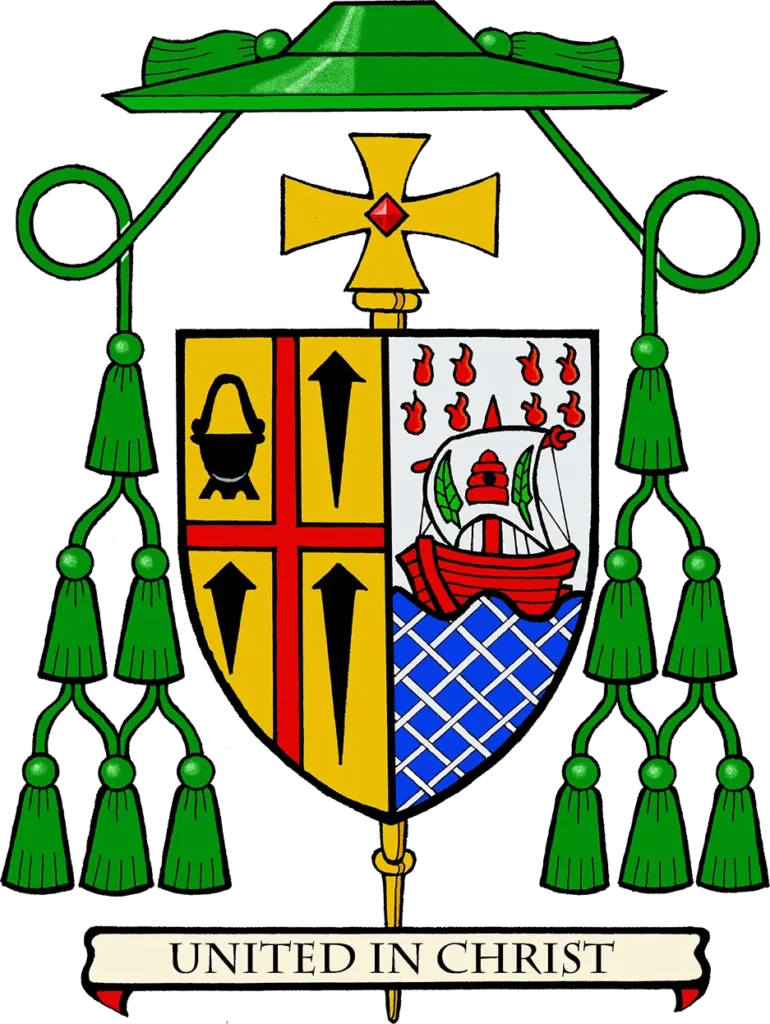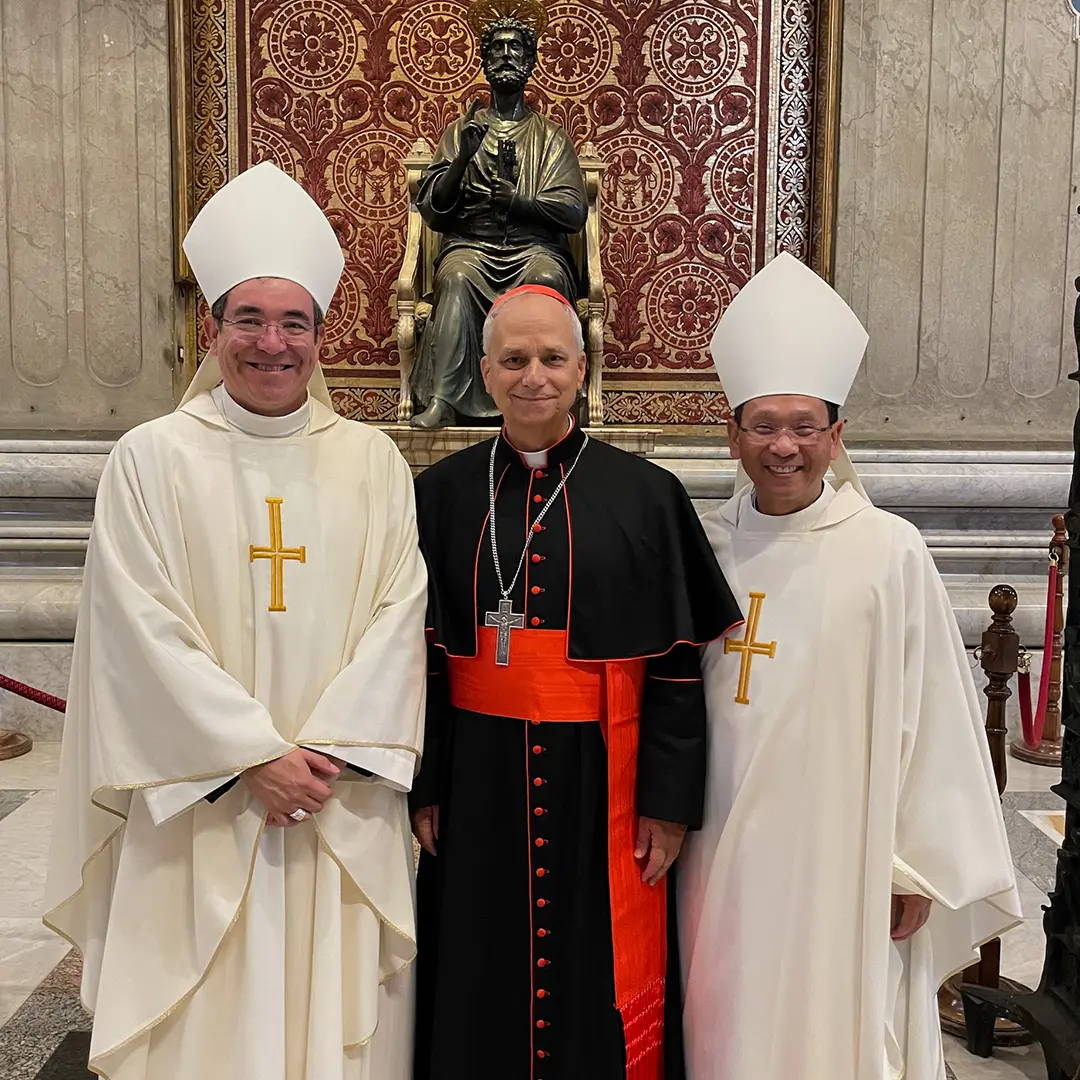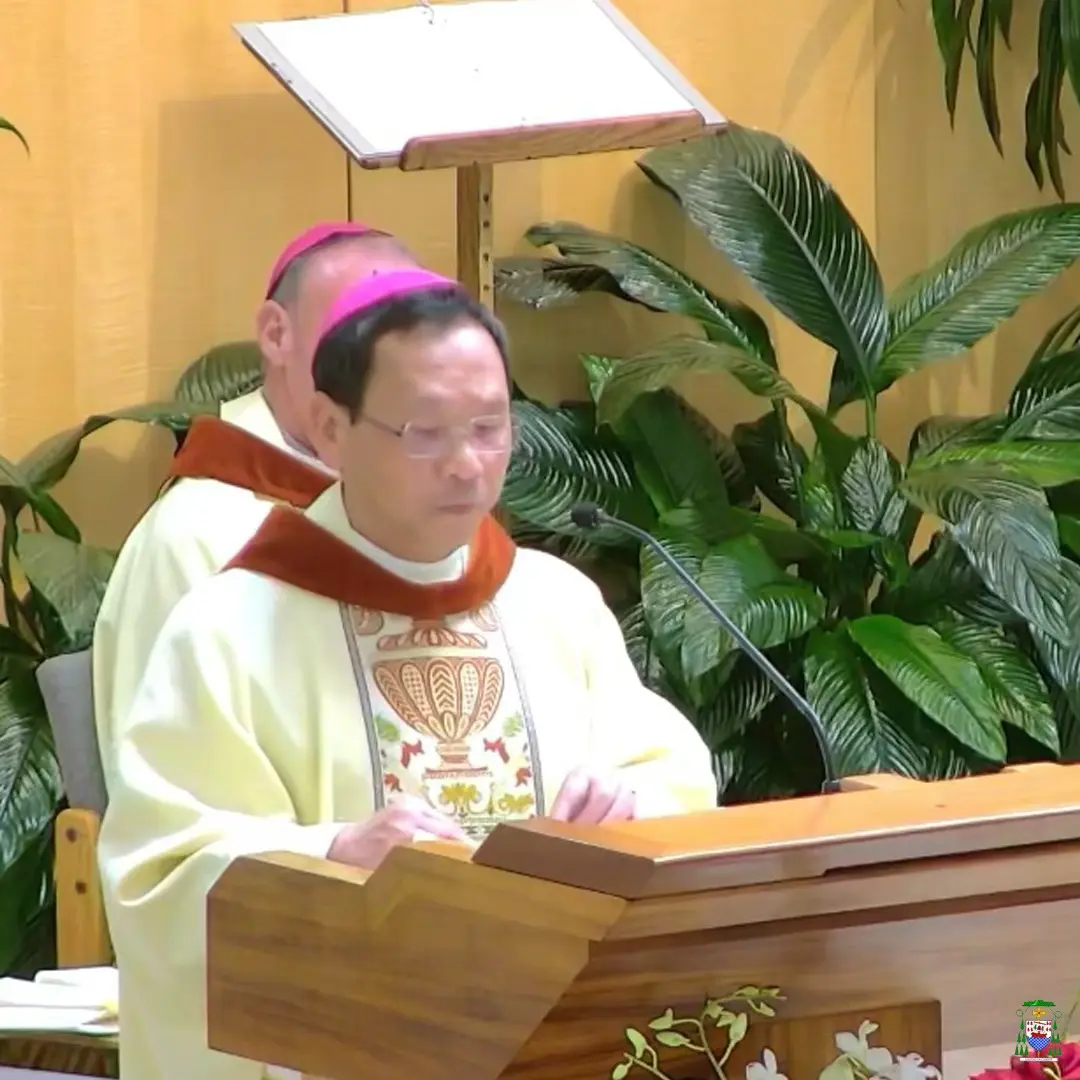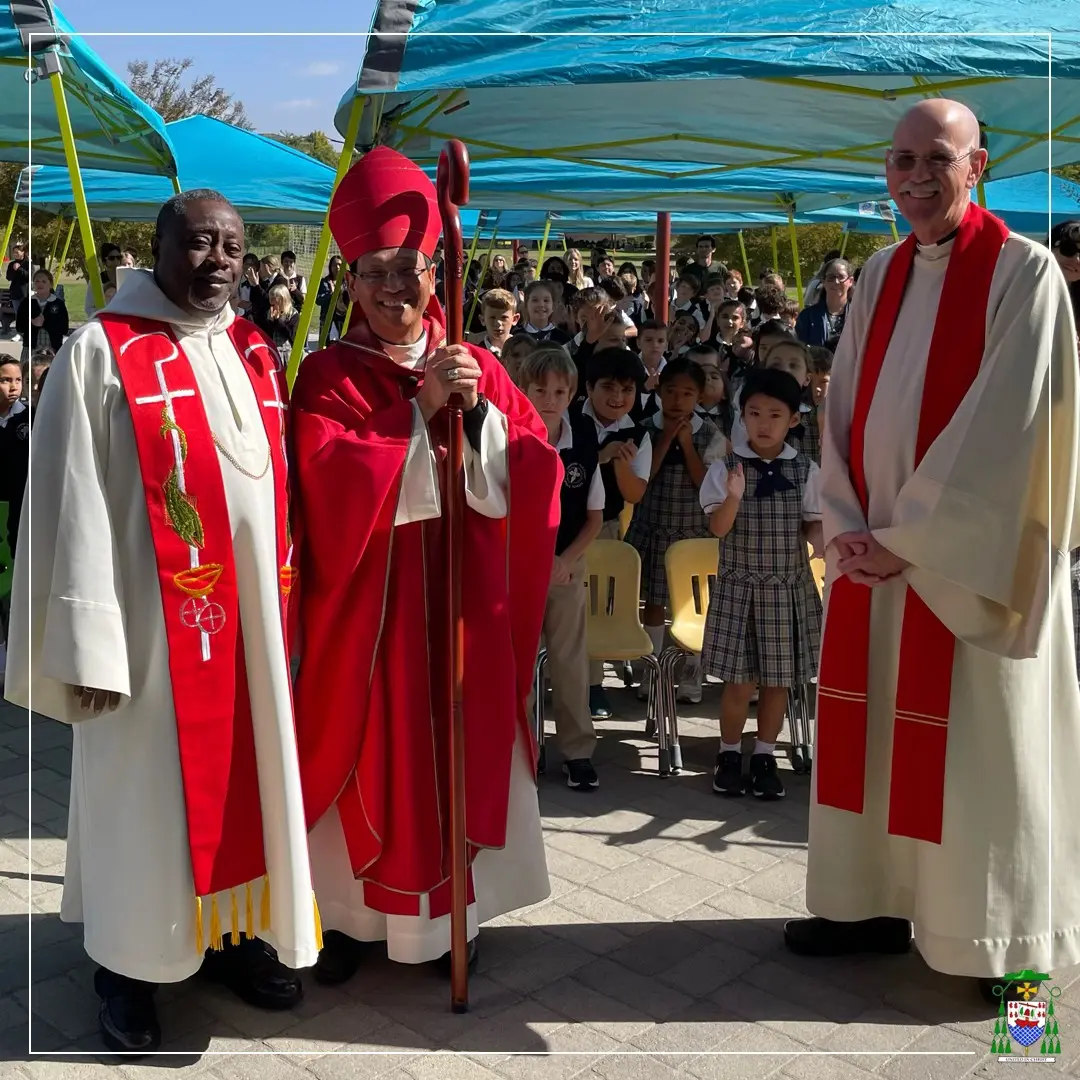

Key Dates
Birth Date:
Jan. 22, 1967
Birth Place:
Da Nang, Vietnam
Ordained:
June 25, 1999 in the Diocese of San Diego
Appointed Auxiliary Bishop of San Diego:
June 6, 2023
Consecrated:
Sept. 28, 2023
Appointed Bishop of San Diego:
May 22, 2025
To Be Installed as Bishop of San Diego:
July 17, 2025

Key Dates
Birth Date:
Jan. 22, 1967
Birth Place:
Da Nang, Vietnam
Ordained:
June 25, 1999 in the Diocese of San Diego
Appointed Auxiliary Bishop of San Diego:
June 6, 2023
Consecrated:
Sept. 28, 2023
Appointed Bishop of San Diego:
May 22, 2025
Installed as Bishop of San Diego:
July 17, 2025
Early Years
Bishop Pham fled Vietnam as a 13-year-old refugee in 1980, accompanied by his older sister and a younger brother, arriving first at a refugee camp in Malaysia, before being sponsored a year later in 1981 by an American family and relocating to Blue Earth, MN. A few months later, another sister came to live with them and in 1983 the remainder of his family – four more siblings and his parents – arrived in Minnesota. His family moved to San Diego in 1985.


Ordination and Service
He graduated from San Diego State University with a bachelor’s and started a master’s degree in aeronautical engineering before transferring to St. Francis Seminary at the University of San Diego. He completed his seminary training at St. Patrick’s Seminary in Menlo Park with Systematic Theology Baccalaureate and Master of Divinity degrees. He was ordained a priest of the San Diego Diocese in 1999. In 2009, he completed a Master of Science in Psychology. In 2020, he completed a Licentiate in Sacred Theology.
Bishop Pham served as associate pastor of St. Mary Star of the Sea Parish; diocesan vocations director; and pastor of Holy Family, St. Therese and Good Shepherd Parishes.
He also has served on the College of Consultors, Diocesan Finance Council, Presbyteral Council, Personnel Board of Priests, Seminary Board, Priests Retirement Pension, Diaconate Council, Executive Board, Vicar for Ethnic and Intercultural Communities, and Vicar General.
Current Responsibilities
Bishop Pham serves as the diocese’s Vicar for Clergy. On March 17, 2025, the diocese’s College of Consultors elected him to serve as diocesan administrator until the Pope appointed a new bishop.
Pope Leo XIV named him the seventh bishop of San Diego on May 22, 2025, the nation’s first Vietnamese American bishop. He is to be installed on July 17.
17
Installation Mass
Current Responsibilities
Bishop Pham serves as the diocese’s Vicar for Clergy. On March 17, 2025, the diocese’s College of Consultors elected him to serve as diocesan administrator until the Pope appointed a new bishop.
Pope Leo XIV named him the seventh bishop of San Diego on May 22, 2025, the nation’s first Vietnamese American bishop. He was installed on July 17.



